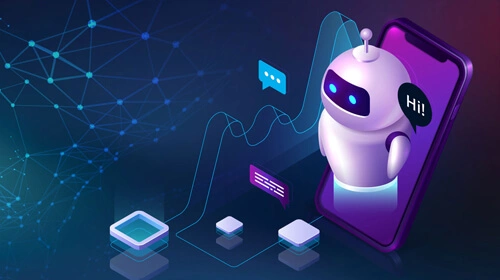-
WeWork - 43, Residency Rd, Shanthala Nagar, Bengaluru, Karnataka
-
Monday to Saturday 9:00AM - 6:00PM
WeWork - 43, Residency Rd, Shanthala Nagar, Bengaluru, Karnataka
Monday to Saturday 9:00AM - 6:00PM


The world of artificial intelligence has come a long way since John McCarthy first conceptualized it in 1956. From rule-based systems to complex neural networks, AI has continuously evolved to transform how businesses engage with customers. Today, with the rise of generative AI, intelligent voicebots can hold natural conversations, understand context, and provide seamless automation that enhances customer experience.
While text-based chatbots have been around for years, voice AI is 3.7x faster than typing and is becoming increasingly popular. Businesses that invest in voice AI see improved customer satisfaction and efficiency. If you're planning to build a voicebot for your business, here are eight essential things to keep in mind to ensure success.
Different types of voicebots cater to various business needs. Understanding them will help you choose the right solution for your use case.
IThese bots execute simple tasks based on direct commands. For example, a user might say, "Check my account balance," and the bot will retrieve and provide the requested information instantly. These bots are best for straightforward interactions that require quick responses.
Conversational agents mimic natural human interactions by engaging in context-aware dialogues. For instance, if a customer inquires about a recent order, the bot can understand the conversation’s flow, ask relevant follow-up questions, and provide accurate order updates. These agents work well for both inbound and outbound voice AI interactions.
Designed for specific business functions, task-specific bots follow predefined workflows to resolve customer inquiries efficiently. For example, a bank might use a voicebot for handling transaction inquiries, while a healthcare provider might deploy one for appointment scheduling.
Hybrid bots combine voice and text-based interactions, allowing users to switch between modalities depending on their needs. A customer might start an inquiry via voice but receive detailed instructions via text for better clarity.
Powered by generative AI, advanced voicebots like Laavya AI analyze context and intent to deliver more human-like conversations. These solutions improve both inbound and outbound interactions by providing dynamic, context-driven responses that enhance customer engagement.
People tend to be more descriptive in voice interactions than in text. Your voicebot should recognize different ways a user might phrase the same request. For example, "I think there’s an issue with my bill" and "My last bill seems incorrect" should both map to the same intent.
A well-designed voicebot personalizes responses by using customer data. Instead of saying, "Your order has been processed," it could say, "Hi Sarah, your shoe order from last week has been processed. Would you like to track its delivery?" This personalization builds stronger customer relationships.
A robotic-sounding bot can be off-putting. Instead, your voicebot should reflect your brand’s tone and personality. For example, instead of simply stating business hours, it could say, "Hey there! We’re open from 9 AM to 5 PM and excited to assist you!" Such small touches make interactions more engaging.
When a bot doesn’t understand a query, it shouldn’t just say, "I didn’t get that." Instead, provide alternatives: "I’m sorry, I didn’t catch that. Could you rephrase your question?" If confusion persists, ensure a smooth transition to a human agent.
Continuous learning is crucial for an effective voicebot. By analyzing past conversations, it should improve its accuracy over time. Regular updates and testing will ensure it remains effective and relevant.
Users should find it simple to get the information they need. Clearly structured conversation flows help guide users efficiently. For example, if a user wants to check their delivery status, the bot should provide a straightforward path: "Say 'track my order' or press 1."
Working with an experienced AI solutions provider ensures you have a reliable and scalable voicebot. Laavya AI offers end-to-end voice AI solutions tailored to your business needs, helping you launch and optimize your voicebot seamlessly.
Different accents, speeds, and speech patterns can affect how users communicate. Your voicebot should be able to normalize speech variations to ensure accurate recognition and responses. This enhances the experience for a diverse user base.
The adoption of conversational AI is growing rapidly. In fact, by 2025, voice assistants are expected to outnumber the global population! Businesses looking to enhance customer experience should invest in a well-structured voice AI strategy.
A robust voicebot—when designed effectively—can boost customer satisfaction, improve efficiency, and provide a seamless conversational experience. If you're looking for a cutting-edge voice AI solution, Laavya AI is here to help. Get in touch for a free consultation and see how AI-powered automation can elevate your business!